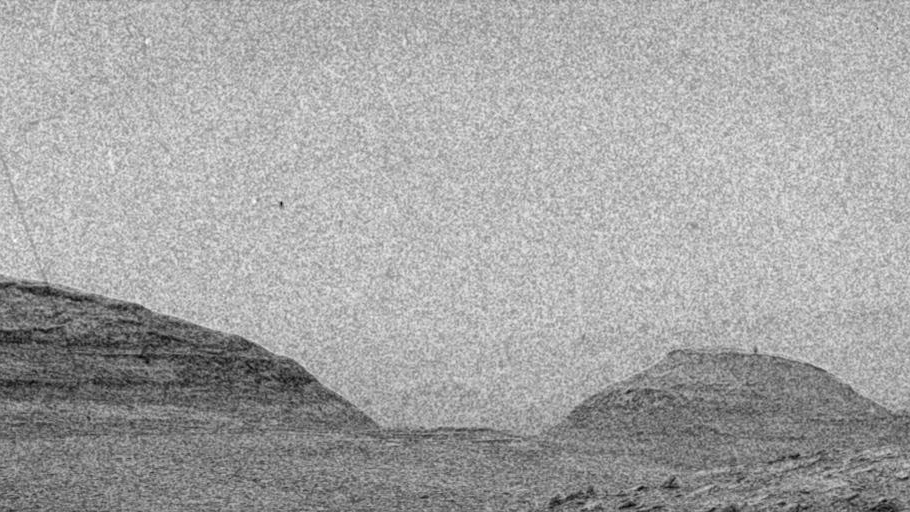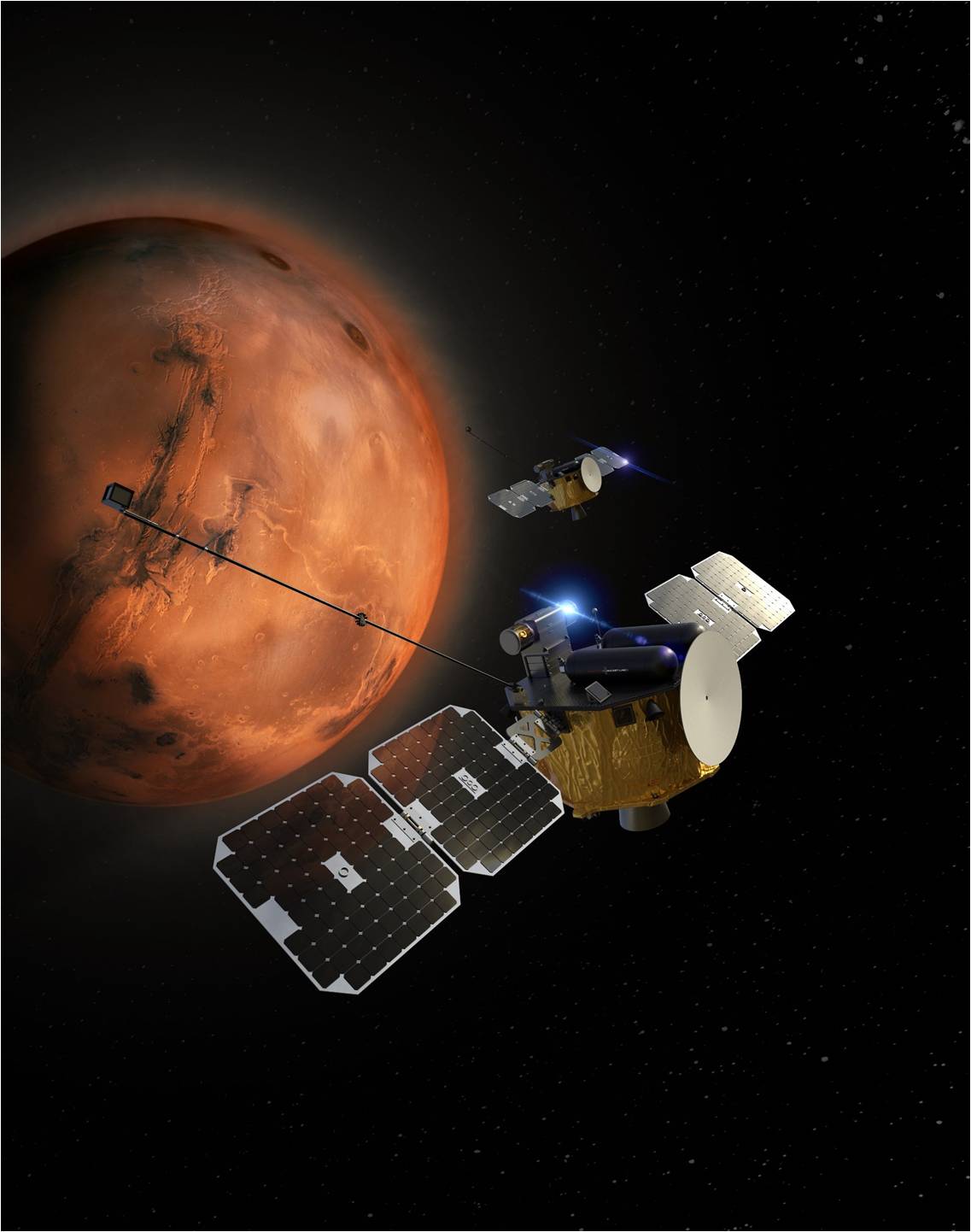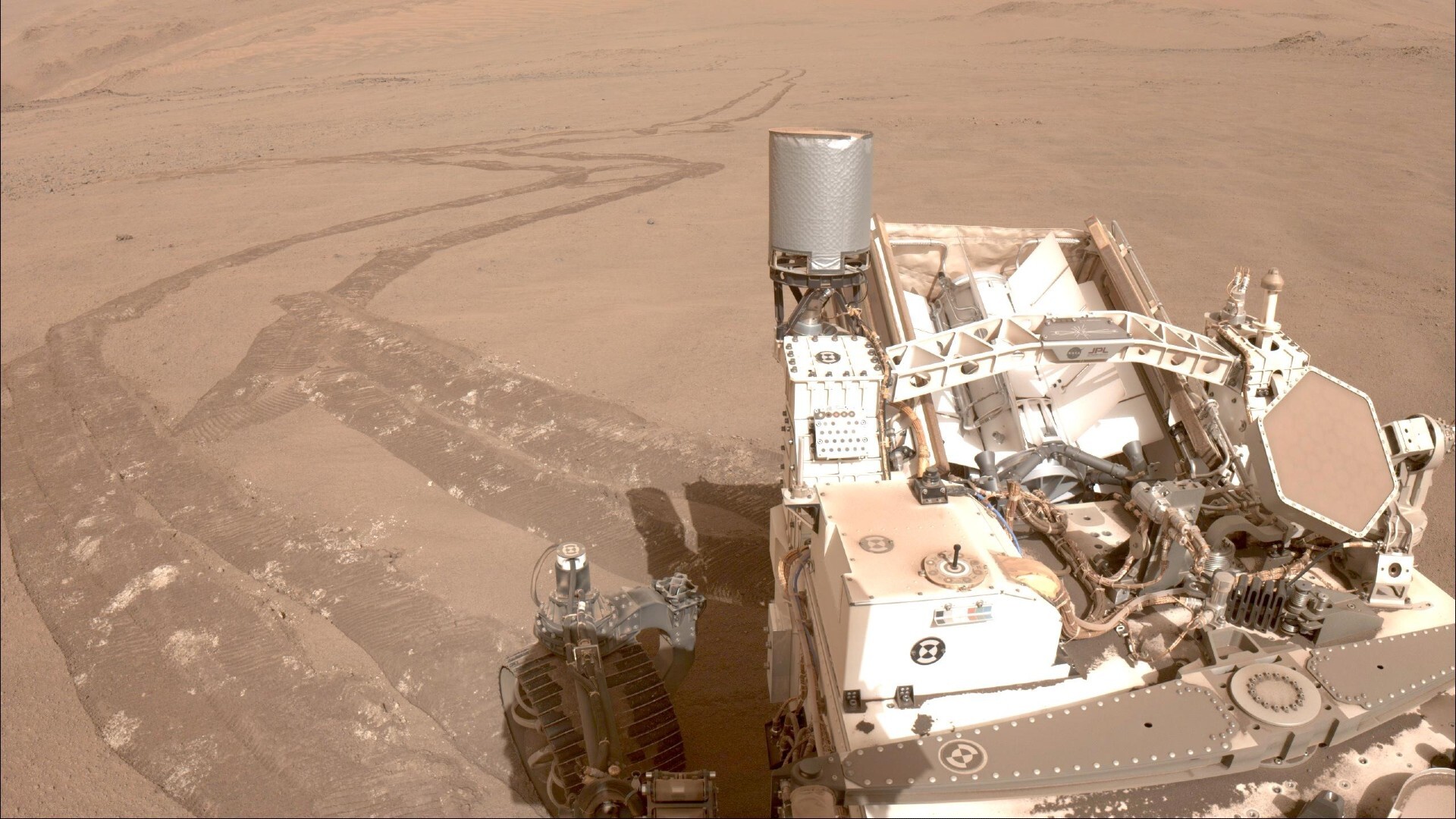How can we protect humans on Mars from dangerous solar storm radiation?

As space agencies and private companies look toward sending human crews to Mars, they'll have to find ways to mitigate the dangers posed by high-energy radiation from solar storms.

The weather on Mars is not a welcoming factor for future expeditions. Yes, it's a harsh, chilly, foreboding planet. The place is no paradise. To make matters worse on Mars, astronauts will be more exposed to space radiation than stay-at-home Earthlings. Why so?
Mars lacks a protective magnetosphere and is cocooned in thin air that is roughly one-percent of the thickness of Earth's atmosphere. This ambiance of nastiness lets in high-energy radiation, such as protons, ions, neutrons and gamma rays. The sun does its part by churning out intense bursts of radiation called solar energetic particles, or SEPs.
Researchers at NASA and at NOAA's Space Weather Prediction Center in Boulder, Colorado are working on strategies for round-trip Mars expeditions to deal with sun-spitting solar storms.
Storm warnings
Not only are there worries about Earth-to-Mars transiting crews, but also about what crews on the surface of the Red Planet will need to have in their tool kit to deal with an incoming storm — especially given the delay in receiving word from mission control teams back on Earth.
"Due to communication delays between Earth and Mars, astronauts must be equipped to independently assess local space weather conditions at Mars," said Gina DiBraccio, acting director of the Planetary Science Division at NASA Headquarters.
"Scientists are currently utilizing available observations and models to develop tools that will play a role in providing advanced warning of any space weather threats directed at Mars," DiBraccio told Space.com.
Arrival time
Thinking about Mars radiation issues and future human sojourns to the planet got to a heightened awareness level from an event in May 2024.
Breaking space news, the latest updates on rocket launches, skywatching events and more!
A strong solar flare flung X-rays and gamma rays at Mars, with a follow-on coronal mass ejection hurling charged particles at the distant world, arriving at the Red Planet in just tens of minutes, NASA reported.
Keeping an eye on the event were analysts at the Moon to Mars (M2M) Space Weather Analysis Office located within the Heliophysics Science Division at NASA's Goddard Space Flight Center in Greenbelt, Maryland. They provide real-time space weather assessments in support of NASA human and robotic missions.
For on-the-spot, encounters at Mars with the sun's output, NASA's MAVEN — the Mars Atmosphere and Volatile Evolution spacecraft — was the only asset that was able to observe the sun's activity and the response of the thin Martian atmosphere at the same time.
ESCAPADE twosome
But there's good news on the Mars horizon.
Later this year, MAVEN is to be joined by two spacecraft destined for Mars orbit. Rocket Lab has built the Escape and Plasma Acceleration and Dynamics Explorers. That's a mouthful shortened to ESCAPADE, a mission run by the University of California Berkeley's Space Science Laboratory and NASA.
This ESCAPADE duo — to be sent to Mars via the maiden takeoff of Blue Origin's New Glenn rocket — will crank out vital science from the Red Planet, expanding the heliophysics fleet capable of monitoring the impacts at Mars from incoming radiation.
Disquieting occasion
The recent punch of radiation on Mars' surface was the largest surge recorded by a Radiation Assessment Detector, or RAD. That device is mounted on NASA's Curiosity Mars rover that plopped down on the planet 12 years earlier.
Additionally, spontaneous SEPs emitted from the sun during solar storms, can dominate the Martian surface radiation field on short time scales of hours to days.
Don Hassler is the principal investigator of RAD at the Southwest Research Institute in Boulder. The radiation environment on the surface of Mars, he explains, consists mainly of Galactic Cosmic Radiation and their secondary particles generated by interactions in the atmosphere or soil.
Additionally, spontaneous SEPs emitted from the Sun during solar storms, can dominate the Martian surface radiation field on short time scales of hours to days.
"Protecting future human astronauts from exposure to this radiation remains one of the major challenges for the exploration of Mars," Hassler and his RAD research colleagues advised during a space weather workshop held last April in Boulder.
Observational gaps
In terms of real-time prediction and modeling about space weather at the Red Planet, there are data gulfs. Those information fissures are largely caused by observational gaps that drive the models, said James Favors, NASA Space Weather Director.
"For example, we have no observations from Sun-Mars Lagrange Point 1, or from the far side of the sun from Earth — as well as a lack of tailored models to accurately predict solar inputs into the unique Mars environment," Favors told Space.com.
Favors points to needed work ahead on creating an Earth-independent space weather capability.
"The challenge from a space weather perspective at Mars is in part a communication infrastructure limitation," said Favors.
"At most points during the Martian year," Favors points out, "it would simply take too long to transmit the necessary data at Mars back to Earth, run the models, and send back the model outputs to a crew at Mars in time for them to take appropriate action."
Favors said that, in terms of future human missions to Mars, one scenario envisioned is that the needed observational and modeling capabilities would be part of the crew vehicle architecture.
"This way the process of creating an actionable space weather prediction could occur fully independent of Earth," Favors said.

Leonard David is an award-winning space journalist who has been reporting on space activities for more than 50 years. Currently writing as Space.com's Space Insider Columnist among his other projects, Leonard has authored numerous books on space exploration, Mars missions and more, with his latest being "Moon Rush: The New Space Race" published in 2019 by National Geographic. He also wrote "Mars: Our Future on the Red Planet" released in 2016 by National Geographic. Leonard has served as a correspondent for SpaceNews, Scientific American and Aerospace America for the AIAA. He has received many awards, including the first Ordway Award for Sustained Excellence in Spaceflight History in 2015 at the AAS Wernher von Braun Memorial Symposium. You can find out Leonard's latest project at his website and on Twitter.



